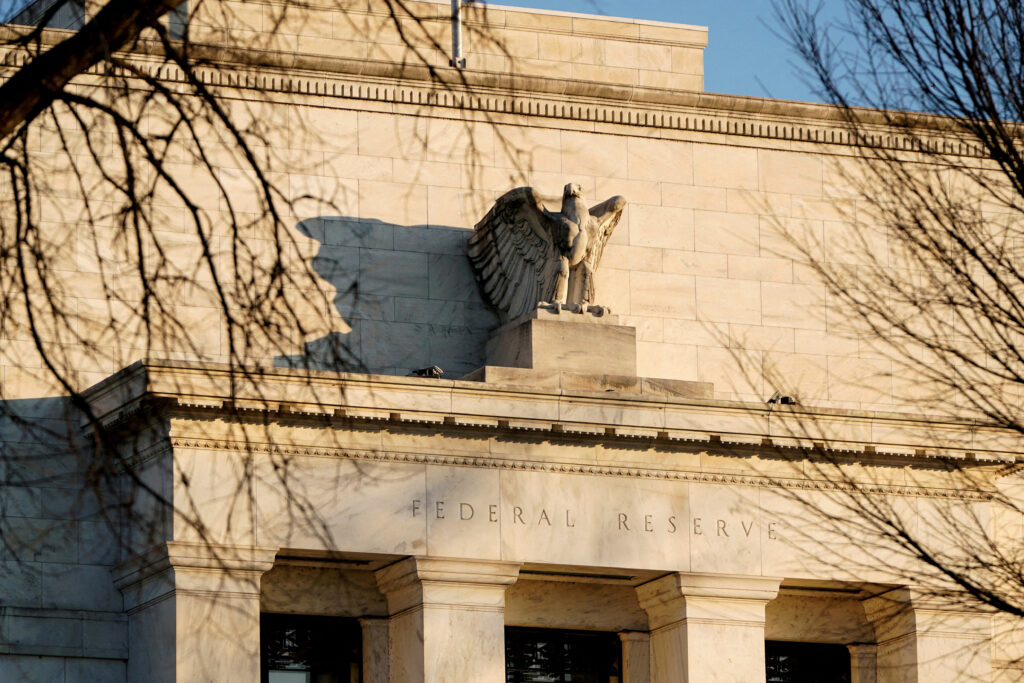WASHINGTON – U.S. job gains increased by the most in six months in September and the unemployment rate fell to 4.1%, pointing to a resilient economy that likely does not need the Federal Reserve to deliver large interest rate cuts for the rest of this year.
In addition to the bigger-than-expected increase in nonfarm payrolls reported by the Labor Department on Friday, wages rose at a solid pace last month. The closely watched employment report also showed the economy added 72,000 more jobs in July and August than previously estimated.
The report followed on the heels of annual benchmark revisions to national accounts data last week that showed the economy is in much better shape than previously estimated, with upgrades to growth, income, savings, and corporate profits.
Fed Chair Jerome Powell acknowledged the improved economic backdrop this week when he pushed back against traders’ expectations for another half-percentage-point rate cut in November, saying, “This is not a (policy-setting) committee that feels like it is in a hurry to cut rates quickly.”
“Today’s report reinforces the broad resilience theme for the U.S. economy, pushing aside concerns of an imminent deterioration in labor market conditions,” said Jonathan Millar, a senior economist at Barclays. “We maintain our call for a 25 basis points cut in November.”
Nonfarm payrolls increased by 254,000 jobs last month, the most since March, the Labor Department’s Bureau of Labor Statistics said. Economists polled by Reuters had forecast payrolls would rise by 140,000 positions after advancing by a previously reported 142,000 in August.
Estimates for September’s job gain ranged from 70,000 to 220,000. The three-month average of monthly job growth increased to 186,000 from 140,000 in August.
The share of industries reporting an increase in payrolls jumped to 57.6% from 51.8% in August.
Strong data, including consumer spending, flowed since the U.S. central bank kicked off its policy easing cycle with a bumper 50 basis points rate reduction last month, leading some economists to wonder if policymakers had panicked.
“If the Fed had known the revisions to the July and August prints in advance, it is very likely that they would have gone for a 25 basis points move instead,” said Kyle Chapman, FX markets analyst at Ballinger Group.
The dollar rallied to a seven-week high against a basket of currencies. Stocks on Wall Street were mostly higher. U.S. Treasury yields rose.
Financial markets boosted the odds of a quarter-percentage-point rate reduction in November to 95% from 71.5% before the report, CME Group’s FedWatch tool showed. The odds of a 50-basis-point cut were almost wiped out.
The Fed cut its policy rate by 50 basis points last month to the 4.75%-5.00% range, its first rate reduction since 2020. It hiked rates by 525 basis points in 2022 and 2023.
MUDDY OCTOBER OUTLOOK
But the labor market could experience some brief turbulence after Hurricane Helene devastated large swathes of the U.S. Southeast last week. Tens of thousands of machinists at Boeing (NYSE: BA) also went on strike in September, with ripple effects on the aerospace company’s suppliers.
The strike, if it persists beyond next week, could dent the nonfarm payrolls data for October, which will be released just days before the November 5 U.S. presidential election.
Voters have been mostly concerned by inflation, though price pressures have abated considerably after surging in 2022.
Robust employment gains last month defied weak labor market sentiment in the Institute for Supply Management and Conference Board surveys. Hiring at restaurants and bars, which increased by 69,000 jobs, lead the nearly broad rise in payrolls.
The healthcare sector added 45,000 positions, driven by home healthcare services, hospitals as well as nursing and residential care facilities.
Government employment increased by 31,000 jobs, lifted by state and local government hiring. Social assistance payrolls rose by 27,000 jobs. Construction employment advanced by 25,000 positions, reflecting solid gains in nonresidential specialty trade contractor jobs.
Retailers added 15,600 jobs, many of them at supermarkets and drugstores. There were also job gains in professional and business services as well as financial activities.
But manufacturing shed 7,000 jobs, concentrated in the motor vehicle industry. Transportation and warehousing lost 8,600, the bulk of them at warehouses and storage facilities.
SOLID WAGE GAINS
Stronger hiring and low layoffs combined to lift average hourly earnings, which rose 0.4% after gaining 0.5% in August. Wages increased 4.0% on a year-on-year basis after climbing 3.9% in August. The average workweek, however, slipped to 34.2 hours from 34.3 in the prior month. Economists were not worried about rising wages and re-igniting inflation.
Still, they argued against another half-percentage-point rate cut at the Fed’s Nov. 6-7 meeting. Policymakers will have October’s report, which is likely to be muddied by Helene and the Boeing strike, in hand for that meeting.
“We do not see the firming in September as a risk to derailing the current downward trend in inflation,” said Michael Pugliese, a senior economist at Wells Fargo. “The underlying trend in the labor market still seems to be toward gradual cooling, and a pickup in productivity growth further tempers the inflationary pressures emanating from the labor market.”
Details of the household survey from which the unemployment rate is derived were equally upbeat, though 121,000 more people were working multiple jobs. The drop in the unemployment rate from 4.2% in August reflected an increase of 430,000 jobs in household employment, which more than absorbed the 150,000 people who entered the labor force.
In April 2023, the jobless rate jumped from 3.4%, boosted in part by those aged 16 to 24 and a rise in temporary layoffs during the annual automobile plant shutdowns in July.
It has now declined for two straight months. The employment-to-population ratio, viewed as a measure of an economy’s ability to create employment, rose to 60.2% from 60.0% in August. Fewer people worked part-time for economic reasons.
“The labor market is finding its steady state after a noisy few months,” said Oscar Munoz, chief U.S. macro strategist at TD Securities.
(Source: ReutersReuters)
Mark Glenn is a financial journalist and breaking news reporter for ABBO News. Mark is known for his ability to deliver real-time news updates on market developments, mergers and acquisitions, corporate earnings reports, and regulatory changes, helping investors stay informed and make sound financial decisions. Read Full Bio










